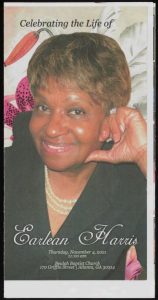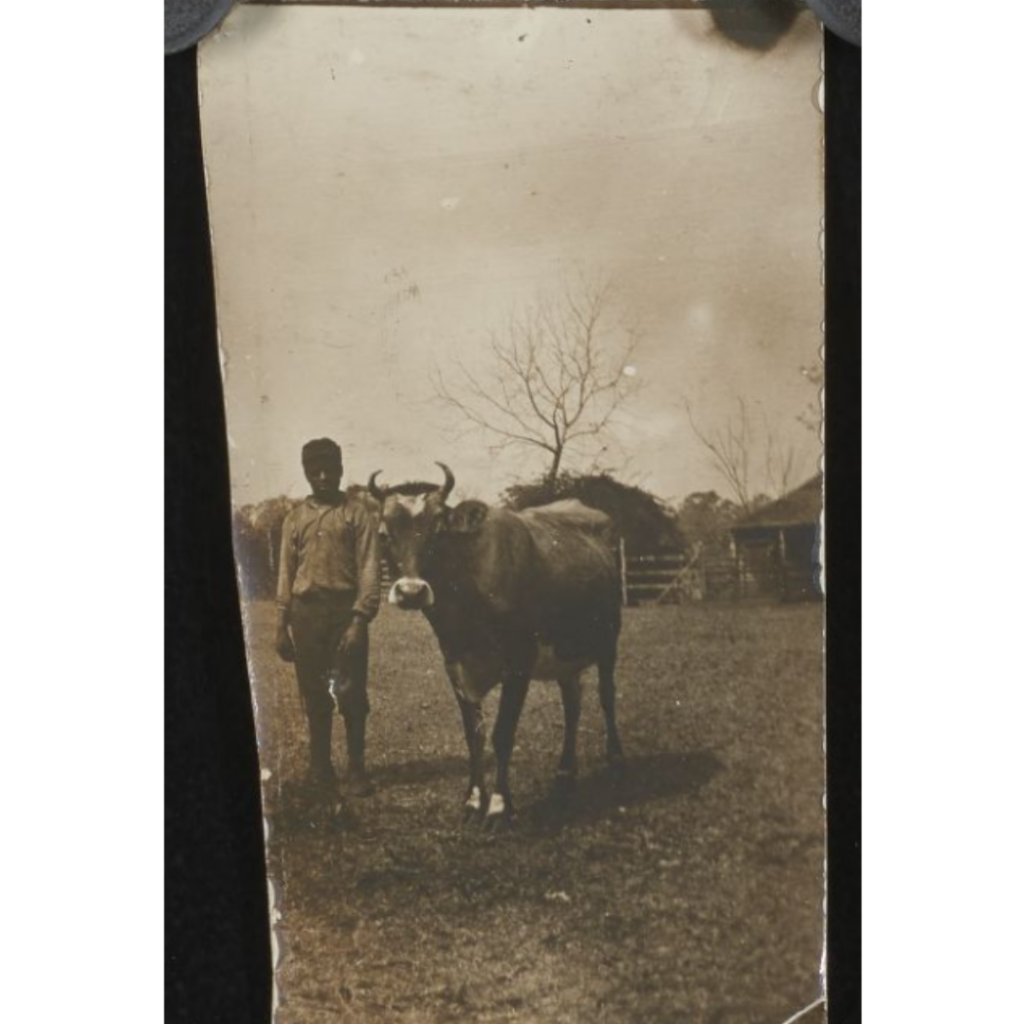Selected by statewide cultural heritage stakeholders and funded by the DLG’s competitive digitization grant program, over 3,000 pages of digitized African American funeral programs from Evans County, Georgia, and other Southeastern towns and cities are now freely available in the Digital Library of Georgia and can be seen online here:
African American Funeral Programs, 1960-2022
The collection of 637 individual programs dates between 1961-2022, with the birth dates of the people represented going back to 1870.
Pharris D. Johnson, former mayor of Bellville, Georgia, chairman of the Savannah College of Art and Design Board of Trustees, and Vice President of the Evans County Historical Society says:
“The Evans County Community Center and African American Archive Museum serves our community in an outstanding manner. They accomplish their mission with a small budget and through dedicated volunteers. As we know, funeral programs provide valuable social and genealogical information. [These materials from] the Evans County Community Center Archives are an important resource for the residents of Evans and surrounding counties.”
Documenting an underrepresented region of Georgia, this collection provides important information for genealogical research and for understanding African American life during different time periods.
Funeral programs provide valuable social and genealogical information and typically include a photograph of the deceased individual, an obituary, a list of surviving relatives, and information about the funeral service. Some programs provide more extensive genealogical information such as birth and death dates, maiden names, past residences, accomplishments, affiliations, and burial locations. For marginalized populations, this information can often be difficult to find, as the records of many in these communities were often either destroyed, kept privately, or never created in the first place.
The Evans County African American Archive Museum has collected funeral programs for over twenty years. Since then, residents have contributed to the collection.
Darin McCoy of the Evans County Historical Society notes:
“[Our] facility operates within an under-served rural county in terms of digitized African American history. However, the Evans County Historical Society alumni and the Evans County African American Archive Museum leadership team are well-known advocates for the preservation and collection of local African American history and artifacts. Our featured displays, public events, and family presentations are unique and emphasize the historical value of these entities. The vision, collections, and the preservation of artifacts, begun over twenty (20) years ago, have now come to fruition.”
Digitization and access have been made possible through the Digital Library of Georgia’s competitive digitization subgrant program and are displayed and searchable within their online portal. The Digital Library of Georgia has also partnered with local libraries and the Georgia Public Library Service to digitize African American funeral programs for people connected to the Atlanta, Augusta-Richmond County, and Thomas County areas.
About the Evans County African American Archive Museum (Claxton, Ga.)
The mission of the Evans County African American Archive Museum is to provide means for all citizens of Evans County to obtain an excellent quality of life through programs and services. The Archive was the recipient of a 2021 GHRAC Award for History Advocacy. Their Facebook group is: https://www.facebook.com/Evans-County-Community-Center-343942125941003/
Selected images from the collection:

URL: https://dlg.usg.edu/record/eccca_aafp-ec_ecaaam-470
Collection: African American Funeral Programs, 1960-2022
Courtesy of the Evans County Community Center (Claxton, Ga.)
Description: Funeral program for Charles L. Bailey. Date of funeral service: June 18, 2011. Location of funeral service: St. John Missionary Baptist Church, Claxton, Georgia, 11:00 a.m. Birth date: November 19, 1916. Death date: June 12, 2011.

URL: https://dlg.usg.edu/record/eccca_aafp-ec_ecaaam-632
Collection: African American Funeral Programs, 1960-2022
Courtesy of the Evans County Community Center (Claxton, Ga.)
Description: Funeral program for Earlene Harris. Date of funeral service: November 4, 2021. Location of funeral service: Beulah Baptist Church, Atlanta, Georgia, 11:00 a.m. Birth date: April 8, 1935. Death date: October 28, 2021.

URL: https://dlg.usg.edu/record/eccca_aafp-ec_ecaaam-402
Collection: African American Funeral Programs, 1960-2022
Courtesy of the Evans County Community Center (Claxton, Ga.)
Description: Funeral program for Reverend Lee Jones. Date of funeral service: June 5, 2008. Location of funeral service: Pittman Park United Methodist Church, Statesboro, Georgia, 1:00 p.m. Birth date: October 6, 1926. Death date: June 02, 2008.


